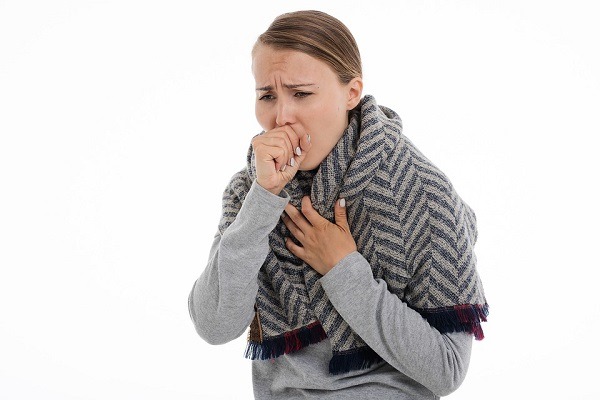People cough for many reasons, but in most cases, it is because they have something irritating their throat. Besides food, foreign particles, stomach acid, and other irritants, it could be because of phlegm.
The term “phlegm” may be used interchangeably with “mucus” because they are one and the same, in a sense. The former is the term used to refer to mucus from the respiratory system. To be precise, it is what people call the excess mucus that they cough up.
Here, you will learn all about phlegm, particularly the meaning behind its appearance, and some remedies you can try to get rid of it.
Colors of Phlegm: What Do They Mean?
Mucus contains germs like bacteria and viruses, as well as immune cells when a person is infected. Although a bit of phlegm is far from dangerous, too much of it can clog the airways and lead to chesty cough. Also referred to as “wet cough,” this type of cough can also be accompanied by a runny nose, nasal congestion, and sore throat.
Clear phlegm means you’re healthy. But if it has a color, it could mean a lot of different things, as explained below:
1. White
When you have thick, white mucus along with nasal congestion, it may mean that an infection is about to begin. The white hue comes from the influx of white blood cells in the mucus, which is the body’s natural response to foreign bodies.
For people with asthma, having white phlegm is also a sign of inflammation in the airways.
2. Light Green or Yellow
Light green or yellow mucus is a surefire sign of infection. The light hue comes from the enzymes in the white blood cells that battle viruses and bacteria.
3. Dark green or yellow
If accompanied by a cough, fever, and sneezing, mucus with this color could be a sign that the infection is getting worse.
In this case, you had better schedule a medical check-up right away, especially if you’re asthmatic and find that your inhaler is no longer effective.
4. Red or pink
Red or pink colors indicate that the mucus is already tinged with blood. This could be because of dryness and irritation in the nasal tissue. People with asthma may also cough up phlegm with streaks of blood.
When this happens, make sure you visit your doctor immediately.
5. Brown
Brownish phlegm could result from mucus mixing with dirt particles, dried blood, and residue from tobacco or smoking.
6. Black
Black phlegm can emerge in heavy smokers or people exposed to heavy smoke or air pollution. It can also signal fungal infection in rare cases, so it’s best to consult your doctor.
How to Get Rid of Phlegm
Phlegm can be expelled by blowing (in case of nasal mucus), spitting, and even swallowing (the stomach can neutralize the germs in it); whatever method works.
The thing is, these might be easier said than done, especially if the mucus is already causing persistent coughing. Fortunately, chesty cough relief is possible with these four tried-and-tested methods:
1. Increase your fluid intake
Although it may sound cliché, increasing your fluid intake is one of the most effective ways to get rid of mucus.
Liquids – especially warm ones – can thin out mucus and make it easier to expel. They also help relieve congestion and chesty cough.
Some most recommended fluids you should sip on are:
- Water
- Warm apple juice
- Chicken soup
- Decaffeinated green or black tea
2. Try taking honey
If you’re out of chesty cough syrup, taking honey can prove to help relieve persistent cough due to mucus buildup.
According to one study published in 2007, children aged 2 to 18 experienced significant relief from coughing after being given buckwheat honey, as reported by their parents.
To do this at home, administer a spoonful of honey every few hours like any cough syrup. Just remember not to offer honey to children below 1 year of age to avoid botulism.
3. Elevate your head
During a cold, mucus buildup tends to drip from the nasal cavity down the throat. This is a common cause of coughing, but it can easily be prevented by elevating your head.
Before you sleep, make sure you have enough pillows to keep your head propped up. You can also try resting on a reclining chair as lying flat on your back causes post-nasal drip.
4. Gargle with saltwater
Gargle warm water mixed with salt whenever you feel like phlegm is starting to gather at the back of your throat. This not only aids in clearing the mucus but also soothes soreness and may even kill germs.
In a cup of water, put around half or three-quarters teaspoon of salt. Make sure you use warm water as it dissolves salt faster. It would also be best to use filtered water that doesn’t contain chlorine which can cause throat irritation.
After taking a sip of the mixture, tilt your head back a bit and let it wash your throat. Don’t swallow. Instead, gently blow air up and gargle for about 30 to 60 seconds before spitting out the saltwater.
Do this as frequently as needed.
Understand the Meaning of Phlegm
Getting rid of phlegm starts with understanding its characteristics.
While it may just be a symptom of an underlying issue, learning how to tell what it indicates makes it easier to treat the condition and, ultimately, get rid of it.
